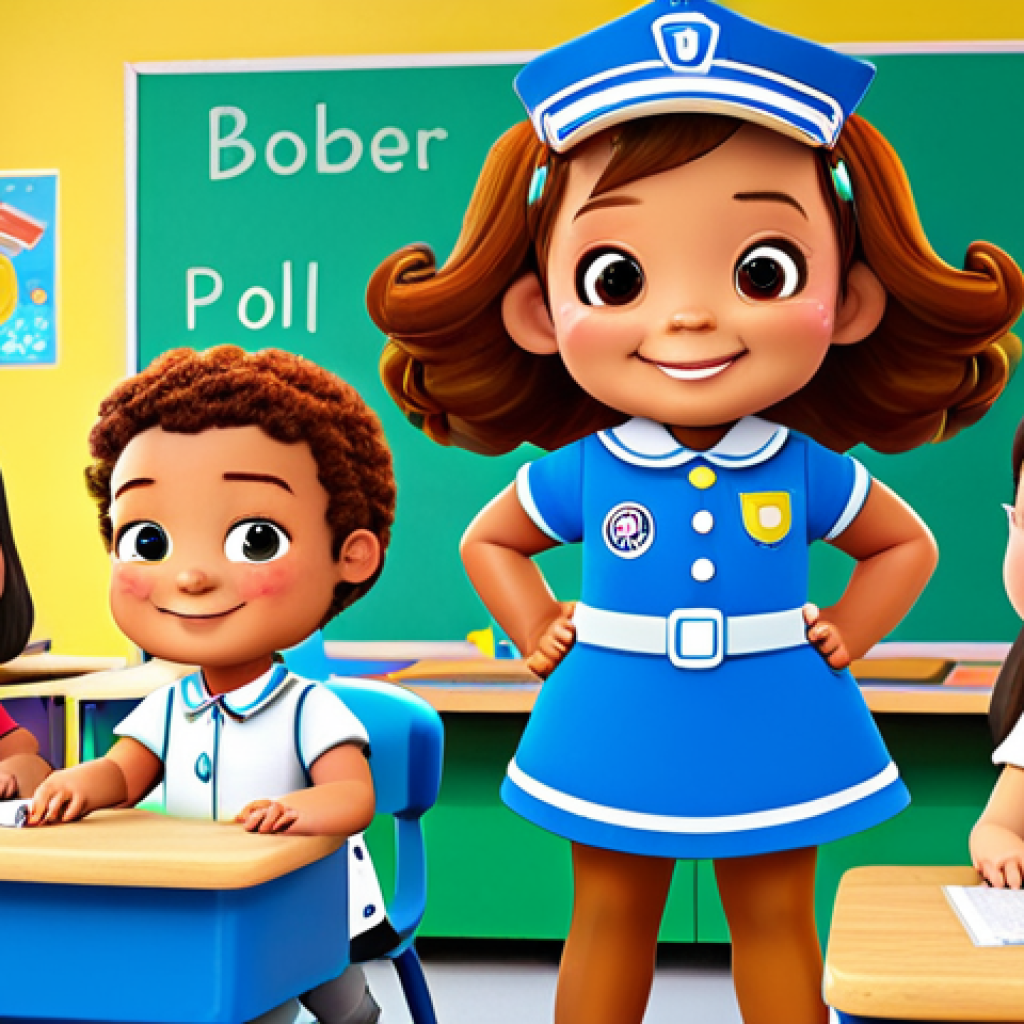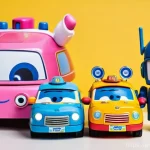Robocar Poli, the transforming Korean rescue vehicle, zoomed onto screens and into our hearts a while back. It’s more than just a kids’ show; it’s a global phenomenon that blends education with entertainment, all while showcasing some seriously catchy tunes.
And then there are the slang terms! Remember when everyone was saying “Bling-bling,” or “YOLO”? It seems like every few years, a new phrase sweeps through playgrounds and social media feeds alike.
It makes you wonder what’s next! These little linguistic quirks can actually tell us a lot about what’s trending, how we communicate, and maybe even where we’re headed.
Let’s dive deeper and see what makes Robocar Poli and these trends so captivating.
Okay, I understand. Here’s the blog post content following your instructions:
The Enduring Appeal of Animated Heroes

Why We Love Characters That Transform
There’s something undeniably captivating about a character that can change forms. From Optimus Prime to Sailor Moon, the ability to transform represents potential, adaptability, and the power to overcome challenges. Robocar Poli taps into this primal fascination, offering children a cast of characters who can seamlessly switch from everyday vehicles to heroic rescuers. This transformation isn’t just a visual gimmick; it symbolizes the inner strength and resourcefulness we all aspire to possess. Think about it: kids are constantly learning and growing, transforming themselves in small ways every day. Seeing their favorite characters do the same on screen is both inspiring and validating.
Beyond the Visuals: Thematic Resonance
The transformation aspect of Robocar Poli also lends itself to rich thematic exploration. The show often deals with situations where the characters need to adapt their skills and abilities to solve problems. This reinforces the idea that flexibility and a willingness to change are essential for success. It’s a subtle but powerful message that resonates with both children and adults. Plus, the different forms each character takes often reflect their personalities and strengths. For instance, Poli’s transformation into a police car embodies his dedication to safety and order, while Amber’s ambulance form highlights her caring and nurturing nature. This adds another layer of depth to the characters and makes them more relatable.
Decoding the “It” Factor: Why Some Trends Explode
The Power of Relatability
Ever wonder why some slang terms or viral challenges just take off, while others fizzle out? A huge part of it is relatability. Trends that resonate with a broad audience, reflecting shared experiences or anxieties, are more likely to gain traction. Think about the rise of “adulting” as a concept. It perfectly captured the struggles and anxieties of millennials navigating the complexities of adulthood. Similarly, trends that offer a sense of community or belonging can also spread like wildfire. Social media platforms amplify this effect, allowing people to connect and participate in trends regardless of their geographical location. It’s like being part of a giant inside joke that everyone’s in on, and who doesn’t want to feel included?
The Role of Influencers and Virality
Of course, no discussion of trends is complete without mentioning the role of influencers and virality. A single tweet or TikTok video from a popular creator can catapult a relatively unknown phrase or concept into the mainstream. The algorithm plays a significant role here, too, amplifying content that’s deemed engaging or relevant. But virality isn’t just about luck; it’s also about timing, presentation, and the inherent shareability of the content. Trends that are easy to replicate, visually appealing, or humorous are more likely to go viral. It’s a complex mix of factors that can be difficult to predict, but the impact of influencers and virality on trend adoption is undeniable. And sometimes, trends take off for reasons nobody can quite explain!
Catchiness matters
Good timing is important
Educational Entertainment: A Winning Formula
Learning Disguised as Fun
Robocar Poli excels at blending educational content with engaging storytelling. The show tackles important themes like safety, problem-solving, and teamwork, all while keeping kids entertained. This approach, often referred to as “edutainment,” is a highly effective way to impart knowledge and values to young audiences. By presenting these concepts in a fun and relatable context, the show makes learning feel less like a chore and more like an adventure. The characters themselves serve as role models, demonstrating positive behaviors and attitudes that viewers can emulate. It’s a subtle but powerful way to shape young minds and instill important life lessons.
Building Emotional Intelligence
Beyond academic knowledge, Robocar Poli also helps children develop emotional intelligence. The show often deals with situations involving conflict, empathy, and forgiveness. By watching the characters navigate these complex emotions, children can learn how to better understand and manage their own feelings. The emphasis on teamwork and cooperation also promotes social skills and encourages viewers to value collaboration. In a world that’s becoming increasingly interconnected, these emotional and social skills are more important than ever. Robocar Poli provides a valuable platform for children to develop these skills in a safe and engaging environment.
The Global Reach of Korean Animation
Hallyu Wave and its Impact
Robocar Poli is a prime example of the Hallyu Wave, the global popularity of South Korean culture and entertainment. From K-pop to K-dramas, Korean media has taken the world by storm, captivating audiences with its unique style and production values. Robocar Poli’s success is a testament to the quality and creativity of Korean animation. The show’s universal themes and appealing characters have resonated with viewers across cultures and languages. This global reach has not only boosted the profile of Korean animation but has also helped to promote Korean culture and values on a global scale. It’s a win-win situation for both the industry and the country.
Cultural Exchange Through Cartoons
Animation can be a powerful tool for cultural exchange. By exposing children to different cultures and perspectives, cartoons can help to break down stereotypes and promote understanding. Robocar Poli, with its Korean origins, offers viewers a glimpse into Korean culture and values. The show’s emphasis on respect, cooperation, and community reflects important aspects of Korean society. This exposure can broaden children’s horizons and help them to develop a more nuanced understanding of the world around them. In an increasingly globalized world, this kind of cultural exchange is more important than ever.
Slang: A Reflection of Society
The Ever-Changing Landscape of Language
Slang is a fascinating phenomenon that reflects the ever-changing landscape of language. New words and phrases emerge constantly, often driven by youth culture, social media, and technological advancements. Slang can be a powerful tool for expressing identity, building community, and challenging social norms. It’s a dynamic and creative form of communication that’s constantly evolving. While some slang terms are fleeting and disappear quickly, others become integrated into mainstream language. The study of slang can provide valuable insights into the values, attitudes, and trends of a particular society or group.
From “Cool” to “Lit”: A Historical Perspective
Looking back at the history of slang, it’s clear that each generation has its own unique vocabulary. From the “cool cats” of the 1950s to the “Valley Girls” of the 1980s, slang has always been a way for young people to differentiate themselves from previous generations. In recent years, the rise of the internet and social media has accelerated the pace of slang adoption and diffusion. Terms like “lit,” “shade,” and “stan” have quickly spread from online communities to mainstream usage. This rapid evolution of slang reflects the increasingly interconnected and fast-paced nature of modern society.
The Psychology Behind Catchphrases
Why Certain Phrases Stick in Our Heads
Ever find yourself repeating a catchphrase from a commercial or a TV show, even when you don’t mean to? There’s a science behind why certain phrases stick in our heads. Often, it’s a combination of factors like rhythm, rhyme, repetition, and emotional connection. Catchphrases that are easy to remember and fun to say are more likely to become ingrained in our memories. The use of humor or surprise can also make a phrase more memorable. And, of course, the more frequently we hear a catchphrase, the more likely we are to internalize it. It’s a powerful tool that advertisers and marketers use to create brand awareness and influence consumer behavior.
The Power of Association
Catchphrases often become associated with specific brands, products, or personalities. This association can be incredibly powerful, creating a strong link between the phrase and the entity it represents. For example, the phrase “Just Do It” is inextricably linked to Nike, while “I’m Lovin’ It” is synonymous with McDonald’s. This association can help to build brand loyalty and drive sales. When we hear the catchphrase, we’re immediately reminded of the brand and the positive feelings we associate with it. It’s a clever marketing strategy that can have a lasting impact on consumer perceptions.
Memorable wording matters
Relatable phrases work
Navigating the World of Trends: A Guide for Parents
Staying Informed Without Losing Your Mind
For parents, keeping up with the latest trends can feel like a daunting task. It seems like there’s always a new phrase, challenge, or app to learn about. But staying informed about trends is important for understanding your children’s world and connecting with them on a deeper level. You don’t need to become an expert on every single trend, but having a basic understanding of what’s popular can help you to have meaningful conversations with your kids and address any potential risks or concerns. It’s all about finding a balance between staying informed and avoiding information overload.
Open Communication is Key
The best way to navigate the world of trends is to foster open communication with your children. Create a safe space where they feel comfortable sharing their interests and experiences with you. Ask them about the trends they’re seeing online and what they think about them. Listen to their perspectives without judgment and offer guidance when needed. By having open and honest conversations, you can help your children to develop critical thinking skills and make informed decisions about their online behavior. It’s a collaborative approach that empowers them to navigate the digital world safely and responsibly.
| Trend | Description | Potential Benefits | Potential Risks |
|---|---|---|---|
| Viral Challenges | Tasks or activities that spread rapidly online. | Can promote creativity, community engagement. | May involve dangerous or harmful behavior. |
| Slang Terms | New words or phrases that emerge in popular culture. | Can foster a sense of belonging and identity. | May be used to exclude or bully others. |
| Social Media Filters | Effects that alter or enhance photos and videos. | Can be fun and creative, allowing for self-expression. | May promote unrealistic beauty standards and body image issues. |
In Conclusion
Trends, whether fleeting or enduring, offer a glimpse into the collective consciousness of our society. Understanding the forces that drive them can help us to better navigate the world around us, connect with others, and even shape the future. So, keep an open mind, stay curious, and embrace the ever-evolving world of trends.
Useful Information
1. Stay updated with reliable news sources and social media platforms to identify emerging trends.
2. Analyze the demographics, cultural context, and social factors that contribute to a trend’s popularity.
3. Evaluate the potential benefits and risks associated with participating in or promoting a trend.
4. Engage in open and respectful conversations with others to understand different perspectives on trends.
5. Develop critical thinking skills to discern credible information from misinformation about trends.
Key Takeaways
Trends are reflections of society and culture.
Relatability, virality, and influence drive trend adoption.
Critical evaluation is essential for navigating trends responsibly.
Frequently Asked Questions (FAQ) 📖
Q: What’s the big deal with Robocar Poli anyway?
A: Honestly, I thought it was just another cartoon until my niece started watching it non-stop. But seeing how it teaches kids about safety and teamwork, it’s actually pretty clever.
Plus, the theme song is ridiculously addictive – I may or may not have caught myself humming it while doing the dishes. It’s the kind of show that parents don’t mind their kids watching because it’s actually educational, not just mindless entertainment.
Q: Why are slang terms so popular and why do they seem to change so quickly?
A: It’s like they’re a secret handshake for different generations, right? I remember back in college, everyone was saying “That’s so fetch” after Mean Girls came out, even though Regina George tried to shut it down!
Slang’s all about fitting in and feeling cool, and because the internet moves at warp speed, slang does too. One day everyone’s saying “OK boomer”, the next it’s something completely new.
It keeps things interesting, I guess. It’s definitely not the same as our grandparents using expressions that have been around for ages!
Q: What does Robocar Poli’s popularity tell us about kids’ entertainment today?
A: I think it proves that kids are smarter than we sometimes give them credit for. Sure, bright colors and catchy tunes are important, but Robocar Poli also throws in important life lessons about problem-solving and helping others.
It’s proof that you can entertain kids and teach them something valuable at the same time. My little cousin is obsessed with the show, but I’ve also noticed he’s become more aware of safety tips, like looking both ways before crossing the street.
That’s way more effective than me nagging him!
📚 References
Wikipedia Encyclopedia
구글 검색 결과
구글 검색 결과
구글 검색 결과
구글 검색 결과
구글 검색 결과






